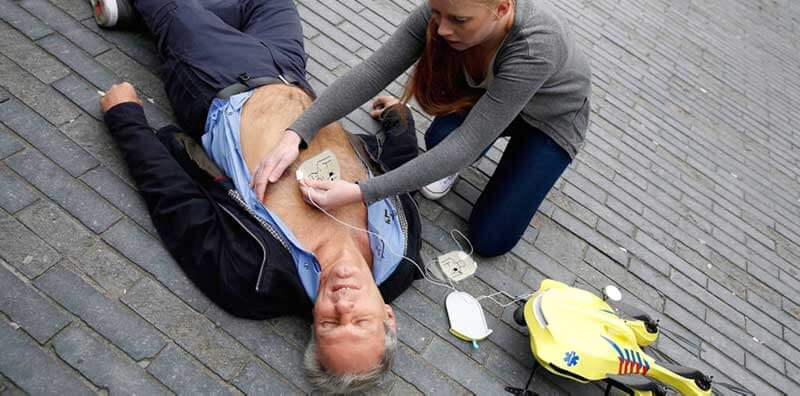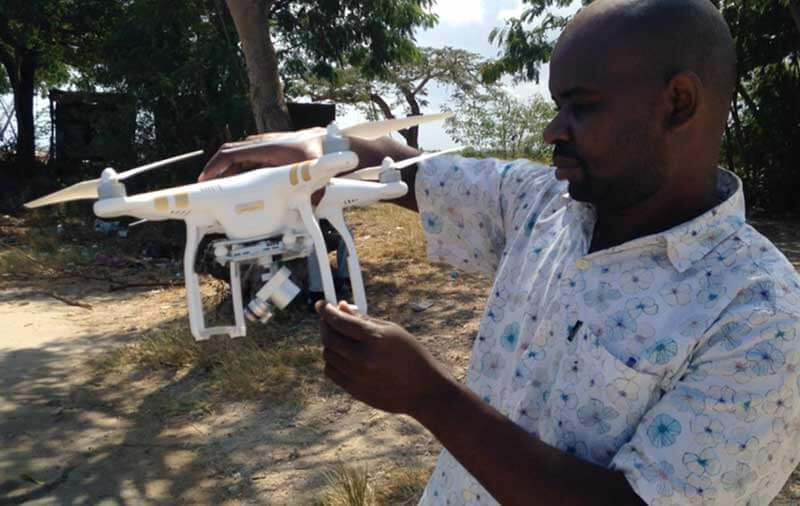- An ambulance drone flies to the rescue
- Drones deliver life-saving supplies in rural Africa
- Drones are leading the fight against malaria, too
- Autonomous drones may soon ferry organs for transplant surgeries
Drones are everywhere. They’re fast, cheap, and surprisingly strong, and everyone – from Amazon to Alibaba – is considering them for their delivery vehicles of the future. But their amazing abilities offer a lot more than same-day shipping. In the Netherlands, for instance, emergency services are exploring their potential to deliver emergency care in less than 60 seconds. In Africa, drones are already delivering life-saving blood and plasma to remote hospitals, reducing a four-hour journey to just minutes. There are plans to deploy them to help us fight the global killer malaria, and we may soon see them carrying the organs and the surgeons necessary to save lives!
An ambulance drone flies to the rescue
In the EU alone, approximately 800,000 people suffer from heart attacks every year, and because emergency workers can’t arrive soon enough, only eight per cent survive. To be clear, this isn’t the fault of these hard-working first responders, who typically begin life-saving procedures ten minutes after they’re called. Unfortunately, that’s just not quick enough, as the catastrophic effects of blood loss to the brain can begin in only four. They’d need to be able to fly to arrive on time.
A Dutch engineer at TU Delft, Alec Momont, has just that in mind. He’s designed an ambulance drone, powered by six rotors, reaching speeds of 100 km per hour. It carries an Automated External Defibrillator (AED), cardiopulmonary resuscitation (CPR) aids, and life-saving medication. Controlled by a team of pilots who are in constant contact with emergency workers, Momont says that his “ambulance drone can get a defibrillator to a patient within a 12 square kilometre zone within a minute, increasing the chance of survival from 8 percent to 80 percent.” When the drone arrives, bystanders can use these automated tools to keep the victim alive until trained professionals can begin their work.

Drones deliver life-saving supplies in rural Africa
In parts of sub-Saharan Africa, infrastructure is poor. That can mean that badly injured patients wait hours for blood or plasma, stacking the odds against them. Whether we’re talking about children suffering from malaria who desperately need a blood transfusion, mothers in need of blood after childbirth, or patients undergoing surgery, these supplies mean the difference between life and death – and every second counts.
Renee Van de Weerdt, a senior tech advisor to the United Nations Population Fund, is optimistic about the future of drone service in underdeveloped areas. “Drones not only overcome infrastructure challenges of poor roads, heavily forested areas or deserts, but can also slash the time needed to wait for life-saving medicines and other supplies,” she says. “They help cut the costs of ground transport using cars, truck or motorbikes on a slow journey over rough terrain, as one drone can cover multiple journeys per day.”
Zipline, an ambitious startup from Silicon Valley, has launched a pilot program in Rwanda. Technicians wait in a refrigerated room that stores these vital supplies. When an order arrives – “online, by text, phone, or WhatsApp” – they spring into action, launching a drone that delivers its payload by parachute to doctors waiting on the ground. What used to take three to four hours by car, now arrives in as little as fifteen minutes. To say that this is life-saving doesn’t really communicate the difference it’s making. Recently, when a young mother was dying after a C-section delivery, Zipline was able to supply the blood doctors needed to keep her alive. “That’s not just her life,” explains Zipline’s founder and CEO, Keller Rinaudo, “that’s a kid who has a mom.”
Drones are leading the fight against malaria, too
When you think about deadly animals, it’s sharks, lions, snakes, and spiders that come to mind, not the humble mosquito. But these blood-sucking insects are in fact the real killers. Nearly half of the world’s population is at risk of malaria. In 2015 alone, there were roughly 212 million malaria cases and an estimated 429 000 malaria deaths.
But drones are fighting back. WeRobotics, a company that specialises in drone tech, is helping the World Health Organisation (WHO) protect vulnerable people from mosquitos and the malaria they carry. Adam Klaptocz, WeRobotics’ co-founder, explains that malaria is a huge problem in the most remote places. Klaptocz notes: “There are lots of methods to control mosquito populations – fumigation, insecticides – but they all have downsides. Insecticide is not good for the environment and needs to be constantly deployed.”
Instead, WeRobotics devised an ingenious solution. By dropping millions of sterile male mosquitoes during mating season, they dramatically cut breeding, reducing the mosquito population without endangering other plants, animals, and insects. As Chris Foxx, a science reporter for the BBC, explains, “Sterile male mosquitoes cannot produce offspring when they mate with females. By crowding out other males, they reduce the mosquito population.”

Autonomous drones may soon ferry organs – and doctors – for transplant surgeries
Organ donation is always a tricky situation. There are known shortages – in the US, more than 100,000 people are waiting for life-saving tissues. And every day, 20 people die because they don’t arrive in time.
Sometimes, this is a crisis driven by incompatibility. In other cases, it’s a problem of supply. Often, it’s a question of time – can the harvested organ be delivered to a waiting patient quickly enough to preserve its integrity? Lung Biotechnology, a company that researches cures for deadly lung diseases, is working together with Chinese drone manufacturer, EHang, to develop drones that can deliver organs from a hospital where they’re harvested to a waiting patient kilometers away. Known for its proposal to automate passenger drones, Derrick Xiong, EHang’s co-founder, envisions a future in which autonomous drones speed the delivery of organs, and perhaps the surgeons who implant them as well. “Together we are transporting organs to patients who need immediate surgery, or to transport doctors to patients,” he says.
These are incredible true stories of life-saving super drones. While we might think of drones as little more than fun-and-games or a cool new delivery service, in fact, they’re healthcare superheroes, saving lives everyday.
Share via:


